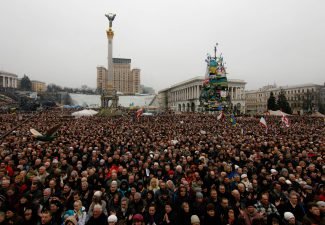Following Scotland’s referendum on independence two weeks ago, Europe has been rocked by a wave of nationalist sentiment throughout culturally unique regions. Though there are several others throughout Europe and the world, the three brightest flames at this time are Catalonia in Spain, Veneto in Italy, and Flanders in Belgium.
Catalonia:
Catalonia is a semiautonomous region in north-eastern Spain. Its capital is Barcelona, the second largest city in Spain, and the region is inhabited by approximately 5.4 million citizens. The region has been seeking independence from Spain for over ten years now.
Catalonians have a very different culture from the rest of Spain, and even speak a different language, Catalonian. Historically independent of Spain, it wasn’t until the 1700s that the region was incorporated into Spain.
Since 2006, the independence movement has gained momentum. The Spanish Government refuses to recognize the legitimacy of the independence campaign, and has not allowed any sort of a vote or referendum.
On Sunday, the Catalonian government announced a plan to go ahead and hold a referendum on independence, regardless of what the Spanish government says. The Prime Minister of Spain has claimed that the referendum is unconstitutional and that the results would not count.
Veneto:
Veneto is a region in north-eastern Italy, home to about 4.8 million citizens. It is also home to one of the most famous cities in the world: Venice. Historically, the Republic of Venice was an independent nation. Venetians were famous throughout the world as traders, and made a fortune selling fine silks and perfumes.
In 1797, the Republic of Venice was defeated and incorporated first into the empire of Napoleon Bonaparte, then passed to the Austrians before finally becoming part of Italy in 1866. Ever since then, the Venetians have wished to regain their independence.
The independence movement has been steadily growing since the 1960s, and in the 2010 election the Venetian Nationalist party gained a huge majority in the local legislature. In March of 2014, a series of polls were conducted throughout the region on whether or not Veneto should be independent. A composite result of those polls shows that over 89% of the region favours independence from Italy.
After the Scottish referendum, various legislatures in Veneto have been working on an independence referendum of their own. It remains to be seen if the Italian government will allow there to be a vote or not.
Flanders:
Flanders comprises the northern half of the Kingdom of Belgium, and is home to 6.3 million people. The capital of Flanders is Brussels, which also happens to be the capital and largest city of Belgium. One of the main differences between Flanders and Belgium is the fact that the Flemish speak Dutch, whereas the Belgians speak French.
Historically, Flanders has been passed around between various European powers, including France, Burgundy, and The Holy Roman Empire. Though never independent, the Flemish have a vibrant culture and rich heritage, and consider themselves culturally and ethnically separate from the rest of Belgium.
The Flemish independence movement has been in existence since before the World War I. The movement has gained traction in recent years, with more of the Flemish people becoming concerned about the protection of the Dutch language and Flemish culture.
Following the Scottish referendum, the Flemish government has started pushing for independence, arguing that they would be better off apart from Belgium. This is not good news for Belgium, because Flanders makes up 60% of the population and contributes over 80% of the nation’s Gross Domestic Product.
It remains to be seen if the Flemish will succeed in holding a referendum on independence, and if the Belgian government will recognize it as being legitimate.

 How can you improve your study habits?
How can you improve your study habits? Russia Invades Crimea
Russia Invades Crimea Top Hiking Places in Orange County
Top Hiking Places in Orange County Are Disneyland Employees Treated Fairly?
Are Disneyland Employees Treated Fairly?
Leave a Reply